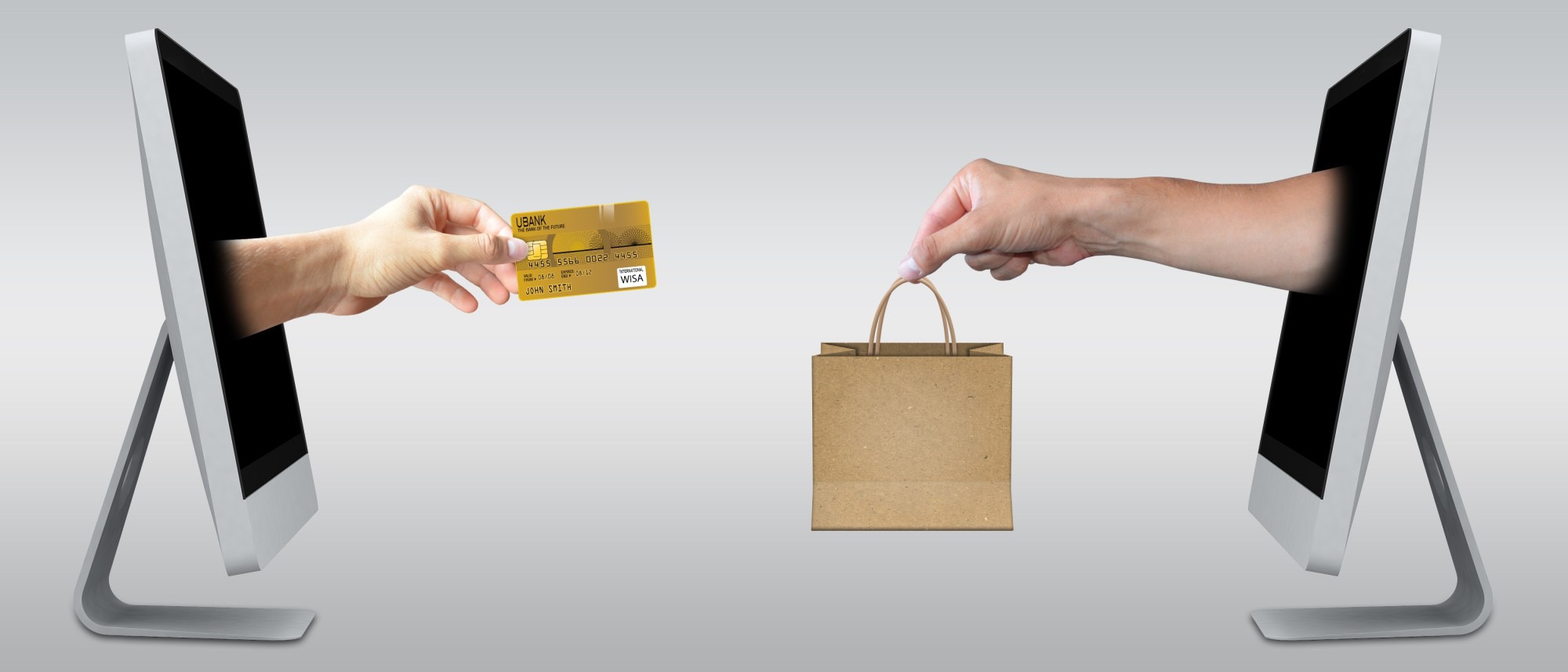With the advent of the internet, many industries slowly shifted to an online focus. In 2018, ecommerce sales accounted for 11.9% of global retail sales, which is up from 7.4% in 2015. You can only expect this upward trend to continue.
If you’re a small business owner, you may be considering getting into the online side of things, but don’t have an understanding of the world yet. For example, there are terms like “ecommerce,” “SEO,” “ASO,” and more. It can be difficult navigating through the digital world.
If you’re pondering the question, “what is ecommerce?”, then read on. We’ll explain all about its history, the types, and platforms you can see it on.
What Is Ecommerce?
“Ecommerce” is a portmanteau of “electronic” and “commerce.” Its most basic definition is the purchase of goods or services over the internet.
For example, when you buy some clothing online, you plug in your credit card number, give them your address, and they ship the garments to you. That’s an ecommerce transaction.
The Beginnings of Ecommerce
Many consider the first ecommerce transaction to have happened in 1994. On August 11, 21-year-old Dan Kohn sold Sting’s Ten Summoner’s Tales CD to his friend Phil Brandenberger through Dan’s website NetMarket.
But ecommerce actually started way before 1994.
In 1969, the first ecommerce company was founded: CompuServe. However, it wasn’t until 1990 that everyone could access the WorldWideWeb. In 1995, Amazon and eBay were founded, which was when ecommerce really took off.
Types of Ecommerce
Since the definition of “ecommerce” is so broad, you can break it down into different types.
The Parties Involved
An easy way to classify different types of ecommerce is by the parties involved in the transactions. They are:
- B2C: Business to consumer. Examples include businesses like Walmart and IKEA
- B2B: Business to business. Examples include accounting software for businesses and ADP, which is a payroll company
- C2B: Consumer to business. Crowdsourcing is an excellent example of C2B ecommerce
- C2C: Consumer to consumer. A prime example of C2C ecommerce is eBay, where consumers sell things to one another
- G2B: Government to business. Examples include auctions, application submissions, and tenders
- B2G: Business to government. Data centers for e-government use, tax payments from businesses, and reports filed by businesses are good examples
- C2G: Consumer to government. Most citizens participate in C2G when they pay their taxes, submit payments for health insurance, or take care of any bills through government websites
As you can see, there are several transaction types your ecommerce site can have, and it doesn’t have to be just one type, either.
The Goods Sold
You can also classify ecommerce merchants based on what kinds of goods they’re offering.
Many retailers have either incorporated online sales into their businesses or have moved them completely online. Goods they sell can include clothing, gifts, homeware, and jewelry. Basically, anything physical they can legally sell can be sold through an ecommerce website.
Retailers can also sell digital goods through their ecommerce websites. For instance, they can sell stock photos, online courses, ebooks, software, and graphics.
Similar to digital goods, another type of goods sold is tailored services. The people usually involved in this category are freelancers, consultants, and educators. Since most of these services are not one-size-fits-all, you’ll get personalized service, hence the “tailored” part.
Ways to Sell
If you’re interested in making your business digital, there are a few ways you can choose to do so.
Social Media
An actual way you sell on social media is through the Buyable Pins feature on Pinterest. Otherwise, it isn’t technically a direct platform for ecommerce transactions, but can facilitate them. It can be very powerful if you use it correctly.
While it’s certainly still a platform people use to share their daily lives on, it’s now also a tool for businesses. Word of mouth is important for your business to thrive, so make sure you have a large social media presence.
Creating optimal ecommerce content is the way to get revenue streaming in. If you can generate interest in the things you’re posting, you can direct users to either your online shop or to a direct link of a product or service.
Digital Shopfronts
If you like being a lone wolf and handling things on your own, then a digital shopfront is a good choice for you. Usually, you set up shop through an ecommerce platform. All you have to do is customize your digital shopfront, enter in the products you want to sell, price them, and you’re set.
Because all the ecommerce platforms are responsible for is your online shopfront, you’ll have to bring in traffic yourself. If you already have a good digital marketing strategy in mind, this shouldn’t be too difficult.
Online Marketplaces
You can also sell your products and services through online marketplaces. You can think of it like renting out a shop in a shopping mall.
You benefit from the shared space you have with other merchants, but may have some competition. Also, it’s likely you have to follow some house rules.
Depending on what your desires are for your business, you might find these rules too restricting. In that case, your products and services may be better-suited for a digital shopfront instead of an online marketplace.
With online marketplaces, you won’t have to worry too much about digital marketing since the marketplaces are responsible for bringing the traffic to you. This is something to consider when you’re factoring in costs for digitalizing your company.
The Future Is Digital
Now you know the answer to the question, “what is ecommerce?”, and also a little more!
Armed with this knowledge, you can gain some online revenue through the best channels for your business. As all industries evolve more and more towards digital venues, it’s vital you keep up or risk losing out on potential revenue.
If you’d like some help for SEO on your ecommerce site, keep browsing our blog posts for more tips!


